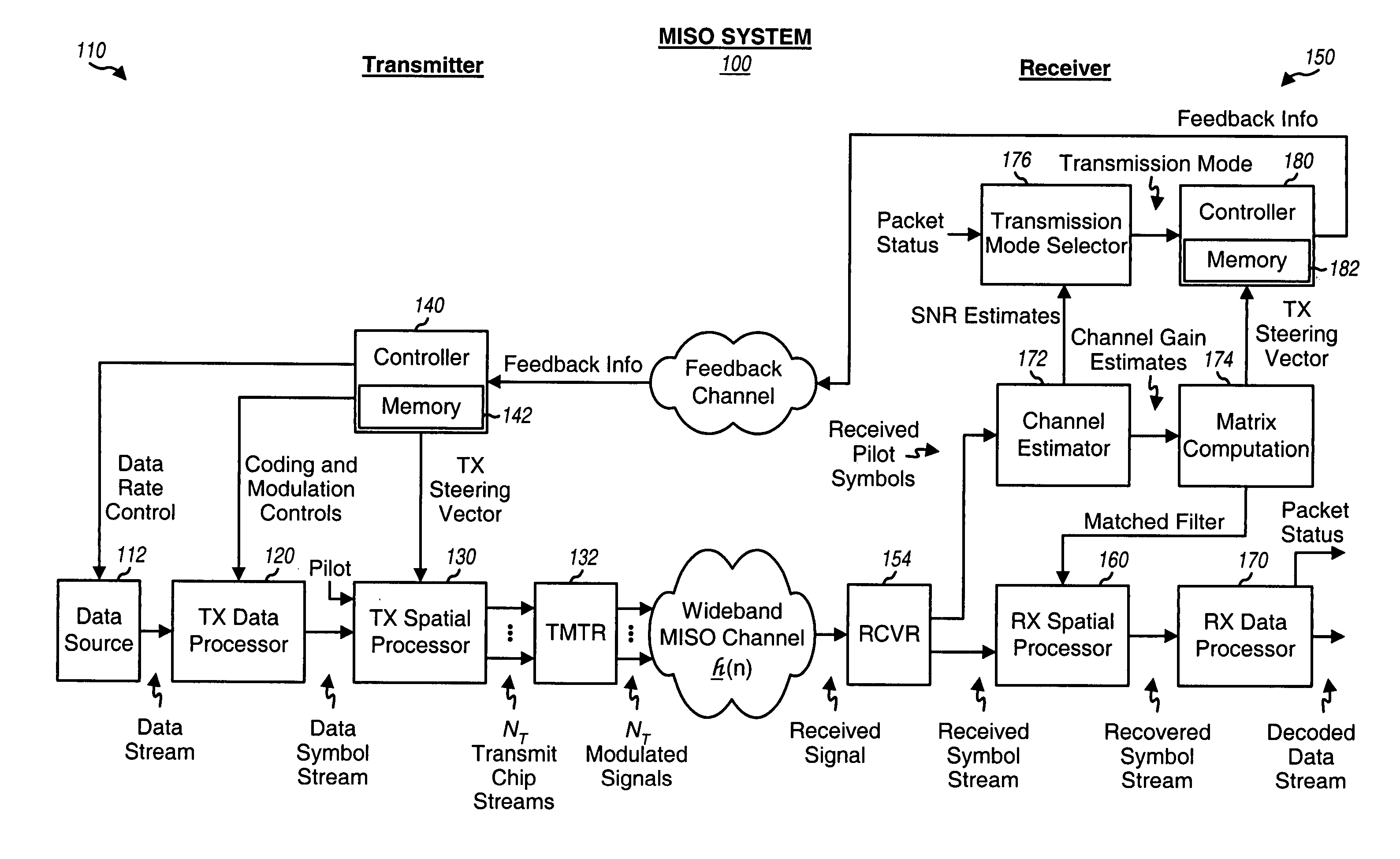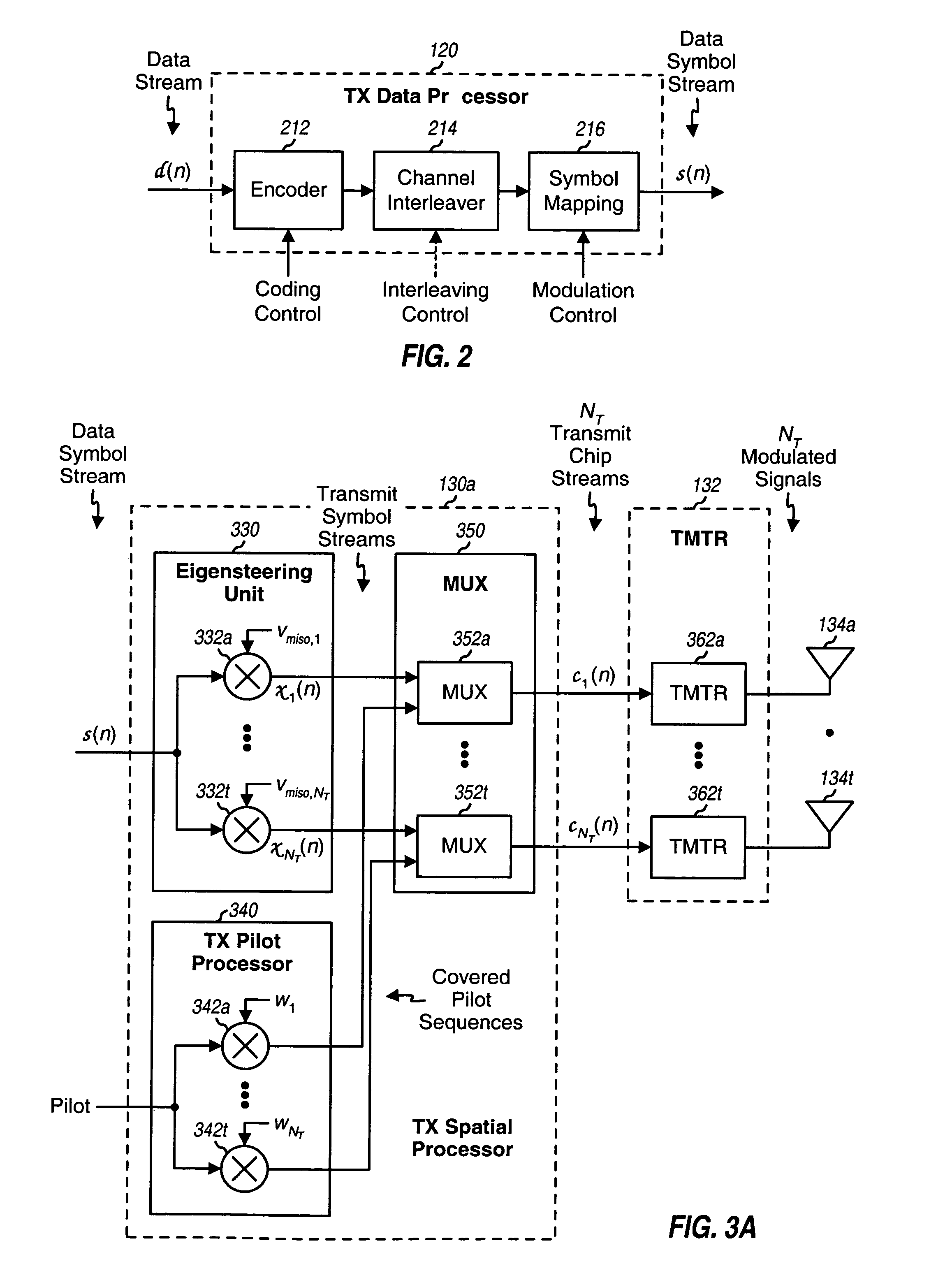Frequency-independent spatial processing for wideband MISO and MIMO systems
- Summary
- Abstract
- Description
- Claims
- Application Information
AI Technical Summary
Benefits of technology
Problems solved by technology
Method used
Image
Examples
Embodiment Construction
The word “exemplary” is used herein to mean “serving as an example, instance, or illustration.” Any embodiment or design described herein as “exemplary” is not necessarily to be construed as preferred or advantageous over other embodiments or designs.
The eigensteering techniques described herein may be used for various wireless communication systems including single-carrier and multi-carrier MISO and MIMO systems. Multiple carriers may be provided by OFDM or some other multiple-carrier modulation technique or construct. In the description below, the term “MIMO system” generically refers to both single-carrier and multi-carrier MIMO systems.
For clarity, the following notations are used for the description below. Time-domain variables are functions of n and are denoted with cursive texts (e.g., h(n)). Frequency-domain variables are functions of k and are denoted with plain texts (e.g., h(k)). Vectors are denoted with lower-case bold-faced and underlined texts (e.g., h(n) and h(k)...
PUM
 Login to View More
Login to View More Abstract
Description
Claims
Application Information
 Login to View More
Login to View More - R&D
- Intellectual Property
- Life Sciences
- Materials
- Tech Scout
- Unparalleled Data Quality
- Higher Quality Content
- 60% Fewer Hallucinations
Browse by: Latest US Patents, China's latest patents, Technical Efficacy Thesaurus, Application Domain, Technology Topic, Popular Technical Reports.
© 2025 PatSnap. All rights reserved.Legal|Privacy policy|Modern Slavery Act Transparency Statement|Sitemap|About US| Contact US: help@patsnap.com



